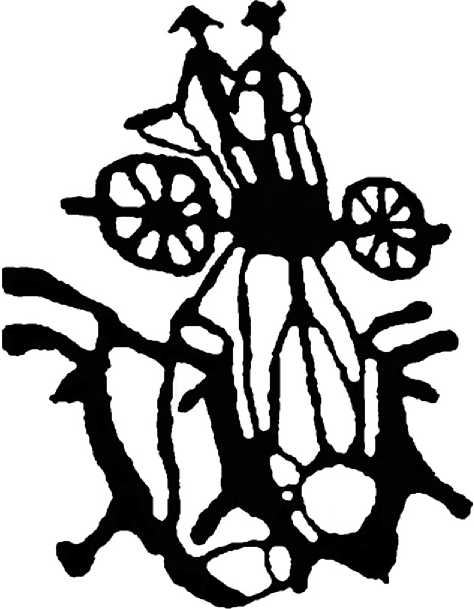The Middle and Late Bronze Age of eastern Central Eurasia is associated with the Andronovo cultural horizon dated in its entirety to 4200-3000 BP. Several regional variants of this extensive and diverse cultural complex appear initially in the southern Uralic mountain and steppe region and extend over time to the south and east as far as eastern Kazakhstan, Xinjiang, Altai, and the Minusinsk basin. Underlying similarities in material culture based upon ceramic styles, mortuary constructions, and bronze industries tie three major regional phases together: Sintashta-Petrovka (4200-3800 BP, southern Urals, northwestern Kazakhstan); Alakul (3700-3300 BP, southern Urals, northwest and north central Kazakhstan, forest-steppe boundary up to the northern bend of the Irtysh river); Fedorovo (3500-3200 BP, northeastern Kazakhstan with later extension into southeastern Kazakhstan, the Russian Altai, and Minusinsk basin). These main phases were followed by a number of localized cultures during the terminal Bronze Age. The technological and organizational changes associated with the Andronovo cultures had impact across Inner Asia and as far as the early dynastic states of the Chinese Central Plain and the ancient Near East.
Andronovo Subsistence and Settlement
The peoples of the various Andronovo subcultures are thought to have practiced settled agro-pastoralism during the early periods and gradually transitioned to a greater dependency on herd animals and increased mobility by later phases. Very little direct botanical evidence for agriculture has been discovered, though researchers believe agricultural production was practiced based on the presence of grain-processing toolkits having mortars and pestles and occasional finds of millet and barley, especially at larger habitations. The settlement record for the Mature Bronze Age in eastern Central Eurasia is substantial and lends support to the model of village-oriented lifeways, at least until the Fedorovo period when many settlement sites had intermittent occupations, possibly related to seasonal movements of peoples and herds. Interlaced with settlement sites are Andronovo cemeteries of monumental kurgan burials.
Although much of the Andronovo period is characterized by small - to moderate-sized settlements located near water sources and having a number of rectangular house structures, large settlements up to 3 ha in size are known from the Sintashta-Petrovka phase. These settlements are clearly defensive sites with oval, circular, or rectangular layouts which were preplanned and comprised walled fortifications and cellular domicile arrangements. Several sites from the eastern slopes of the Ural mountains, called by archaeologists the ‘Country of Towns’, could be considered type sites, including Bersuat, Stepnoe, and the best known of the circular variety, Arkaim. In all, there are approximately 20 known fortified settlements in this region which stretches along the eastern base of the Urals for 400 km. A number of these settlements have extensive remains of smelting ovens, bronze slag, copper ore, crucibles, and molds, providing evidence for highly specialized and intensive bronze artifact and copper ingot production, leading some researchers to describe these settlements as Bronze Age industrial centers.
Dispersals of Steppe Bronze Technology
Simple copper or small-scale bronze technologies emerged among peoples of the western Yamnaya culture, the Botai-Tersek cultures, Afanas’evo/Okunev cultures, and around Lake Baikal among Glazkovo hunter-gatherer groups (5300-3300 BP). During the course of the Andronovo cultural period, bronzemanufacturing techniques, arsenic and tin alloy formulas, and artifact types spread across much of Kazakhstan, Western Siberia, and Inner Asia. Regions where metallic ores existed were visited or occupied by diverse groups and heavily exploited, as with the copper mining sites of Kenkazgan, north central Kazakhstan, and Vorovskaya Yama in the upper Ural river basin. Other ancient copper and tin sources are known from the Altai Mountains, the Yenisei river basin, Xinjiang, and Uzbekistan. Due to the geographical dispersion of resources, manufacturing centers, and areas of bronze consumption, the social dynamics of bronze in eastern Central Eurasia necessitated cultural networks of exchange, interaction, competition, and movement.
For example, long distance interaction was initiated between steppe groups and the urban oasis centers of the Bactria-Margiana Archaeological Complex (BMAC) in the Kara Kum desert region (4200-3800 BC). Though somewhat controversial, current evidence suggests that cultural contact between the steppe and Xinjiang, Gansu, and Ningxia may have contributed to the appearance of initial bronze industries along the periphery of China. Such contacts are thought to have contributed a number of implement types, alloys, and production techniques to this region by 4200 BP (e. g., Qijia and Siba cultures). These early technological developments from China’s northwest subsequently influenced the appearance of local bronze industries and exchange regimes in the Ordos region (early Zhukaigou) and eastern Inner Mongolia (Lower Xiajiadian) by 4000 BP. Across Mongolia archaeologists have found artifacts related to bronze work, such as two-piece stone molds, ore pounders, and crucibles as well as several copper mining and bronze production sites such as Zuukh (southwestern Mongolia), Oyu Tolgoi (South Gobi), and Erdenet (northern Mongolia).
Metallurgical production during the Late Bronze Age became increasingly sophisticated in resource transport, alloying and casting, and in the wide diversity of decorative items, tools, and weapons created in bronze. The Seima-Turbino technological horizon of the Late Bronze Age marks the widespread adoption of a highly developed tin alloy bronze culture across eastern Central Eurasia that includes specific artifact types (curved dagger-knives, socketed axes and spearheads, and associated nephrite jade axes) and stylized depictions of steppe and forest animals. Though this highly refined bronze culture was practiced over a tremendously large region, it drew upon copper, tin, and jade sources located in the Sayan-Altai Mountains based on exchange networks between the Altai and production sites like Atasu in Central Kazakhstan and Rostovka on the Irtysh river.
Dispersals of Transport Technology
The movement of material culture, its styles, and production methods across large geographical areas suggest both contact and interaction and the development of similar systems of symbolic meaning across dispersed communities. The mobility made possible by herd-based subsistence and supported with animal transport using wagons and carts probably played an important role in maintaining steppe interaction. Wagons pulled by oxen were initially employed as part of the steppe adaptation during the Yamnaya cultural period of western Central Eurasia. By 4000 BP, Andronovo-Sintashta period kurgan cemeteries have the earliest evidence for lightweight, spoked wheel carts or chariots, as well as the horses which pulled them and their harness equipment. This provides solid evidence for traction using domesticated horses and further suggests that the complex and labor intensive kurgan burials in which these vehicles were found, likely marked the differentiated social status of their owners. Beyond marking high status and having ceremonial or display value, chariots may also have been involved in the proliferation of warfare across the steppe. Evidence for a period of heightened conflict includes the heavy fortifications at early Andronovo sites and the widespread manufacture of specialized weapons, such as pick-axes and stone mace-heads, which have no function as tools.
Chariots were the first rapid transport land vehicle and chariot technology using horse traction spread quickly from the northern steppe southward, and possibly as far as the ancient Near East. Between the Kazakh steppe and the Central Plain of China there is little direct evidence for chariot use during the Bronze Age, though by 3250 BP fully developed chariot culture appeared in the royal Shang dynasty tombs at Yinxu, Anyang. So far, only a corridor of Bronze Age petroglyph sites document knowledge of chariots in vivid images across the Russian and Mongolian Altai Mountains, the Tian Shan of Xinjiang, and the Inner Mongolian Yinshan range (Figure 3). Solid wooden wheels dated to 3200 BP have been recovered at the cemetery site of Qizilchoqa near Hami, Xinjiang and a spoked wheel is reported from the animal corral site of Nomhong in Qinghai (mid-fourth millennium BP). Neither of these contexts is associated with evidence for horse traction and these particular wheel specimens were probably designed for use with carts.

Figure 3 Pecked image of a spoked, two-wheeled cart or chariot from the site of Tebsh Uul, southwest Mongolia.
In addition to the emergence of chariot use, several archaeologists argue for the development of horseback riding during or prior to the Andronovo cultural period. It is notoriously difficult to archaeologically differentiate human groups practicing horse hunting from those who had domesticated horses and to date the most convincing evidence has been provided by bit wear analysis (the identification of beveling on horse teeth from metallic bit use), for example, at the Eneolithic site of Botai. However, there are good arguments questioning the reliability of bit wear evidence for indicating horse husbandry. One problem with this analysis is that soft material bits made from thong or rope do not cause reliably detectable beveling.
Bit wear is a good source of indirect evidence for horse control when combined with other lines of supporting evidence. These include the identification of bridle equipment in contexts with horses, reconstruction of horse herd demographics, and high numbers of horses associated with other domestic herd animals. The best direct evidence for horse management is to be found in historical references or clear artistic depictions, the earliest of which date to the very end of the fifth millennium BP. Likewise, burial contexts in which horses are unmistakably associated with traction equipment, as at the Sintashta site, also date to the late fifth and early fourth millennium BP. Since the management of horse herds would be logistically difficult on foot or by vehicle, horse riding must have emerged prior to horse traction sometime before 4100 BP, though there exists no unquestionable evidence for this early practice as of yet.




 World History
World History









